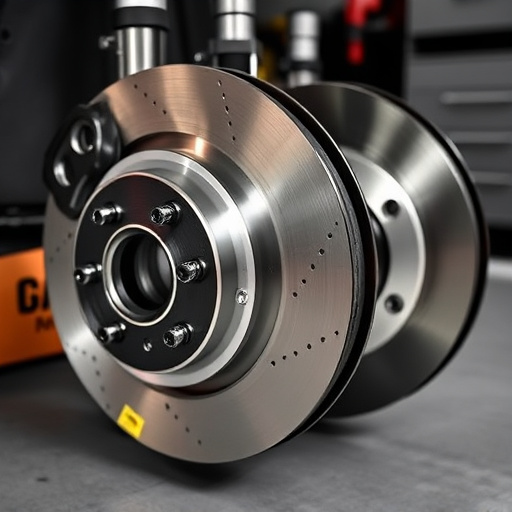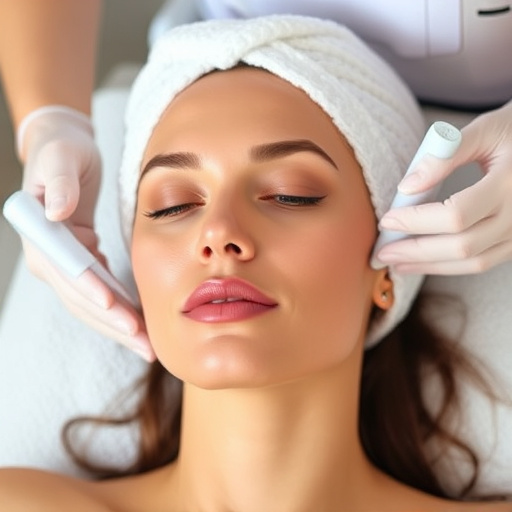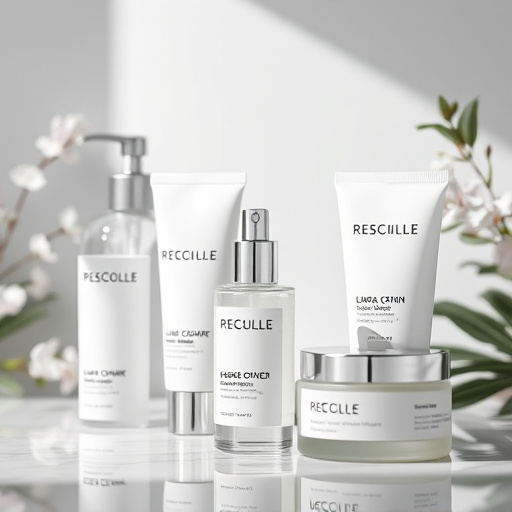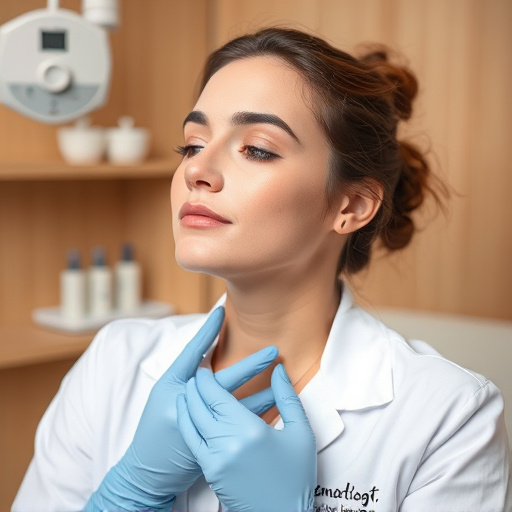Hormonal acne treatment requires addressing complex factors like insulin resistance, stress, and androgen imbalances, often exacerbated by obesity and conditions like PCOS. Understanding these root causes is crucial for effective management alongside anti-aging procedures. Hormonal changes during life stages also trigger acne. Everyday products containing hormonal disruptors contribute to inflammation and oil production, making it vital to identify and avoid them. Techniques like chemical peels and pore refinement enhance skin health post-hormonal acne treatment.
“Uncovering the intricate web of hormonal acne treatment begins with understanding its root causes. This comprehensive guide delves into the complex relationship between hormones and skin health, exploring factors that contribute to this common yet often misunderstood condition.
We’ll navigate through ‘Unraveling Hormonal Imbalance: The Underlying Factors,’ where we dissect environmental disruptors affecting hormone levels. Then, we provide a clear ‘Diagnosing Hormonal Acne’ guide, helping you recognize its unique signs.
Finally, we offer an extensive ‘Treating Hormonal Acne’ section, detailing lifestyle changes and various treatment options to help you manage and overcome this skin concern.”
- Unraveling Hormonal Imbalance: The Underlying Factors
- – Exploring the connection between hormones and acne
- – Identifying common hormonal disruptors in today's environment
Unraveling Hormonal Imbalance: The Underlying Factors
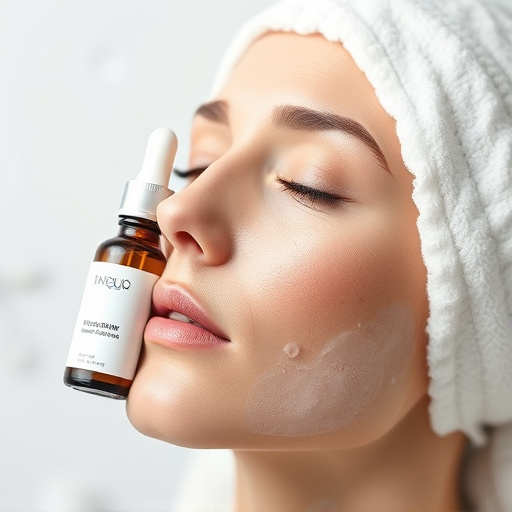
Unraveling Hormonal Imbalance: The Underlying Factors
Hormonal acne treatment is a complex process that requires understanding the intricate dance of hormones within our bodies, specifically the overproduction or improper regulation of androgens, such as testosterone. This hormonal imbalance can be triggered by various factors, many of which are interconnected. One significant contributor is insulin resistance, where cells become less responsive to insulin, leading to elevated androgen levels. This condition often parallels obesity, a factor that exacerbates inflammation and creates an environment conducive to acne development.
Stress, another key player, impacts hormone production and skin health through a cascade of events. When stressed, the body releases cortisol, which can stimulate oil production and disrupt natural hormonal balance. Moreover, certain medical conditions like polycystic ovary syndrome (PCOS) are characterized by irregular hormonal levels, often resulting in excessive androgen secretion, leading to acne outbreaks. Recognizing these underlying factors is crucial in addressing hormonal acne treatment effectively, alongside exploring anti-aging treatments or aesthetic procedures that target skin health as a holistic approach.
– Exploring the connection between hormones and acne
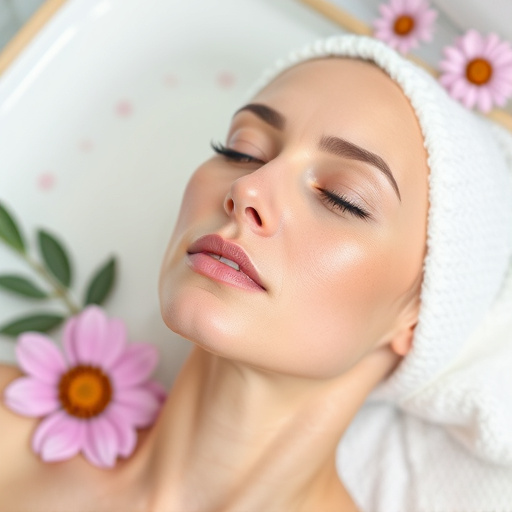
Acne is often thought to be a mere skin condition, but it’s deeply connected to our hormonal landscape. Understanding this intricate link is paramount in exploring effective hormonal acne treatment methods. Hormones play a pivotal role in regulating our skin’s oil production and cell turnover. Imbalances or fluctuations in hormones can trigger excessive sebum secretion, leading to clogged pores and the formation of acne lesions. This is why many individuals experience an exacerbation of acne during certain periods, such as puberty, pregnancy, or menopause, when hormonal changes are prevalent.
The relationship between hormones and acne goes beyond basic causes; it involves complex interactions within our bodies. For instance, the androgen hormone, which includes testosterone, has been implicated in promoting oil production, making it a key target for customized facials and aesthetic treatments designed to address hormonal acne. By tailoring facial treatments to target these specific hormonal influences, professionals can offer more precise solutions, contributing to improved skin clarity and overall satisfaction with hormonal acne treatment outcomes.
– Identifying common hormonal disruptors in today's environment
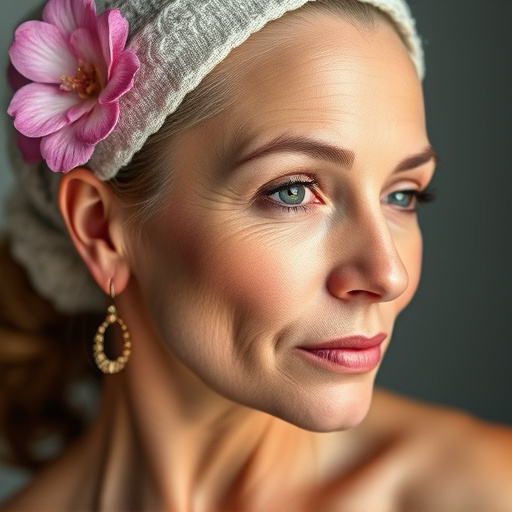
In today’s world, our environment is filled with numerous hormonal disruptors that can significantly impact our overall health and well-being, including contributing to hormonal acne treatment challenges. These disruptors are present in various everyday products we use, from personal care items like cosmetics and cleaning agents to food additives and even water sources. Common examples include bisphenol A (BPA), found in plastics, phthalates used to soften plastics, and perfluoroalkyl and polyfluoroalkyl substances (PFAS), often present in non-stick cookware and waterproof clothing.
Many of these chemicals mimic or interfere with our body’s natural hormones, disrupting the delicate balance within our endocrine system. This disruption can lead to increased inflammation and oil production, two key factors in developing hormonal acne. To address this issue effectively, understanding and identifying these disruptors is a crucial step towards effective hormonal acne treatment and subsequent skin rejuvenation techniques like chemical peels or pore refinement procedures for improved skin health.
By unraveling the complex relationship between hormones and acne, and identifying environmental factors that disrupt hormonal balance, we gain valuable insights into effective hormonal acne treatment. Understanding these root causes is key to developing targeted strategies for managing and preventing this common skin condition. Through informed choices regarding lifestyle, diet, and personal care products, individuals can take proactive steps towards clearer, healthier skin.


